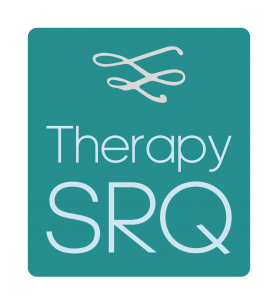How to Help Your Child Calm Down
As a parent, it can be challenging to watch your child struggle with intense emotions. Whether it’s a tantrum, meltdown, or just general restlessness, it’s natural to want to help your child calm down and find peace. However, it’s not always easy to know the best way to do so.
In this article, we’ll explore some effective techniques for helping your child calm down and find a sense of peace.
Why Is It Important to Help Your Child Calm Down?
Children, especially young ones, are still learning how to regulate their emotions. They may not have the tools or skills to calm themselves down when they become overwhelmed. As a parent, it’s important to help your child learn how to manage their emotions in a healthy way.
By teaching your child how to calm down, you are also helping them develop important life skills that will benefit them in the long run. Learning how to regulate emotions can lead to better self-control, improved communication, and stronger relationships.
The Benefits of Quiet Time
by Annie Spratt (https://unsplash.com/@anniespratt)
One effective way to help your child calm down is by implementing quiet time. This is a designated period where your child can have some alone time to relax and recharge. Quiet time can be especially helpful for children who are easily overstimulated or have trouble calming down.
Quiet time can also be beneficial for parents, as it gives them a chance to take a break and recharge as well. It’s a win-win situation for both parent and child.
Child Calming Techniques
There are many different techniques you can use to help your child calm down. Here are a few effective methods to try:
Deep Breathing
Deep breathing is a simple yet powerful technique for calming down. Encourage your child to take slow, deep breaths in through their nose and out through their mouth. You can even make it into a game by having them imagine they are blowing up a balloon with each breath.
Counting
Counting is another effective way to help your child calm down. Have them count slowly to 10 or 20, focusing on each number as they say it. This can help distract them from their emotions and bring them back to the present moment.
Visualization
Visualization is a technique that involves imagining a peaceful or happy place. Encourage your child to close their eyes and picture a place that makes them feel calm and safe. This could be a beach, a forest, or even their own bedroom. Ask them to describe what they see, hear, and feel in their peaceful place.
Sensory Activities
Sensory activities can be incredibly calming for children. These activities involve using different senses, such as touch, sight, and smell, to help your child relax. Some examples of sensory activities include playing with playdough, using a sensory bin filled with rice or beans, or using a calming essential oil diffuser.
How to Implement Quiet Time
Set a Designated Time
by zhenzhong liu (https://unsplash.com/@lzzbest)
The first step in implementing quiet time is to set a designated time for it. This could be a specific time of day, such as after lunch or before bedtime, or it could be triggered by a certain event, such as a tantrum or meltdown.
It’s important to be consistent with the timing of quiet time so that your child knows what to expect and can prepare for it.
Create a Calm Environment
The environment in which your child has quiet time is crucial. It should be a calm, quiet, and comfortable space where your child can relax and unwind. This could be their bedroom, a cozy corner in the living room, or even a designated “calm down” area.
Make sure the space is free from distractions, such as toys or electronics, and that it is a safe and peaceful environment for your child.
Encourage Relaxing Activities
During quiet time, encourage your child to engage in relaxing activities. This could include reading a book, coloring, listening to calming music, or playing with a sensory bin. Avoid activities that are too stimulating, such as watching TV or playing video games.
Be Patient and Supportive
It’s important to be patient and supportive during quiet time. Your child may resist at first, especially if they are used to constant stimulation. Be understanding and give them time to adjust to this new routine.
If your child is having a particularly difficult time calming down, offer them words of encouragement and remind them that it’s okay to feel upset. Let them know that you are there for them and that you believe in their ability to calm down.
Additional Tips for Helping Your Child Calm Down
Lead by Example
by Timon Studler (https://unsplash.com/@derstudi)
Children learn by example, so it’s important to model calm and peaceful behavior for them. If you are feeling overwhelmed or stressed, take a few deep breaths and practice some calming techniques yourself. This will show your child that it’s okay to take a break and calm down when they are feeling overwhelmed.
Use Positive Reinforcement
When your child successfully calms down, be sure to praise and reward them. This will reinforce the behavior and encourage them to continue using these techniques in the future.
Seek Professional Help if Needed
If your child is consistently struggling to regulate their emotions and calm down, it may be beneficial to seek professional help. A therapist or counselor can work with your child to develop coping strategies and techniques for managing their emotions. At Therapy SRQ we are here to help.
Conclusion
Helping your child calm down is an important part of parenting. By implementing quiet time and teaching your child calming techniques, you can help them develop important life skills and manage their emotions in a healthy way. Remember to be patient, supportive, and lead by example, and your child will learn how to find peace and calm in even the most challenging situations.






